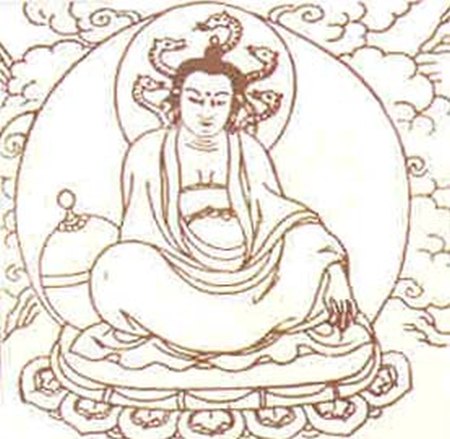Some acknowledged, some unknown to the world, these Indian scientists from years of lore have created and strengthened the fundamentals of modern science.
Aryabhatta I – Earth’s Rotational Time – At the age of 23, Aryabhatta I judiciously noted down his observations and calculations for a mathematical system to figure out the workings of the universe for his now famous work Aryabhatiyam . The book, his only surviving treatise on mathematical astronomy, states that the earth was spherical in shape, rotates on its axis and like the remaining planets, revolves around the sun in an elliptical orbit. All this, 1500 years and 1000 years before Copernicus and Galileo! He also calculated that the earth takes 23 hours 56 minutes and 4.01 seconds to complete one rotation, which coincides with the modern value of 23:56:4.091.

Bhaskara I – Formulated Units, Tens, Hundreds… – He did give the numeral zero its symbol, but Bhaskara’s I probably most important mathematical contribution concerns the representation of numbers in the positional system. Numbers are arranged in columns and have to be read from right to left as units, tens, hundreds, thousands and so on. He has given us an extremely succinct method for writing down even very large numbers.

Brahmagupta – Rules for Zero – While Bhaskara I may be credited with giving zero the symbol it has today and Aryabhatta for introducing zero to the world, it was in fact Brahmagupta who gave zero its exalted status as a number in mathematics. He was the first mathematician to frame the rules of operations. He concluded rather successfully in his book, Brahmasphuta Siddhanta that the addition or subtraction of zero to or from any quantity, negative or positive is always zero, the product of any quantity with zero is zero and that the division of any quantity by zero is infinity.

BhasKara II – Gravity – We don’t know whether an apple fell on Bhaskara II’s head as he was resting underneath the tree or that maybe he fell from the apple tree itself. All we know is that he was the first to conceive and write on the notion of gravity and the effect of its force some 500 years before the proverbial apple fell on Sir Isaac Newton’s head. In his book, Surya Siddhant, Bhaskara II makes a note on the force of gravity: “objects,” he noted, “fall on earth due to a force of attraction by the earth. Therefore, the earth, planets, constellations, moon, and sun are held in orbit due to this attraction.” how do you like them apples?

Nagarjuna I – Discoverer of Alloys – around 2nd BC, in a laboratory in Nagarjuna Konda, Andhra Pradesh, Nagarjuna I, a Buddhist monk, exclaimed in joy as he discovered the process of alloying. His book, Rasarathnakara, retains notes on the process of extraction of silver, tin and copper from their ores and their purification. They also mention the process of distillation, sublimation, calcination and coloring of metals.

Baudhayana – Before Pythagoras – Baudhayana, in his book, the Sulba Sutra, mentions a theorem stating that a rope stretched along the length of the diagonal (hypotenuse) of a rectangle produces an area, which the vertical and horizontal sides make together. Sounds familiar? It is, in fact, a prelude to a theorem, which would eventually be known as the Pythagoras theorem.

Kanada – Proponent of Atomic Theory – According to folklore, whilst nibbling on a morsel of food, Kanada threw away the bits after realizing that they could not be divided into smaller bites. This incident prompted him to consider that everything in the universe is made up of pramanu (atom), the real entities which are obtained when a matter is divided and subdivided until further division is not possible. Many believe that Kanada was the earliest proponent of the atomic concept in the universe and that the atom was the indestructible particle of matter, long before John Dalton some 2500 years later introduced his law of atomic theory into modern day physics.

Varahamihira – Mapping the Skies – Gather around all ye sailors, astronomers, astrologers and star-gazers. A man named Varahamihira gazed at the stars one night as you do and observed that the night sky continuously shifts throughout the year as the earth orbits the sun. But, “if one were to take a fixed point in time and mark the position of the star on that day every year,” he put forth, “one would notice the sky slowly shifting backwards with each progressing year.” He was the first to mention in his work Panchasiddhantika that the Ayanamsa, or the shifting of the equinox is 50.32 seconds, which remains unchanged till this day. This time period helps us chart and navigate the skies at night or day, learn about our horoscope for the year and keep a track of our favorite constellation.

Sushruta – 1st Plastic Surgeon – 2600 years ago, Sushruta along with his colleagues conducted what could be termed as the first plastic surgery in the world. To reconstruct the amputated noses of his patients, a marked punishment of their crimes, Sushruta would use his technique of forehead flap rhinoplasty, which is repairing the disfigured nose with a flap of skin from the forehead, a practice almost unchanged to this day. Educated in Varanasi, Sushruta pioneered the science of surgery in India. His book, the Sushrutasamhita, is the first classical book of surgery, in which he describes over 120 surgical instruments, 300 surgical procedures and classifies human surgery in eight categories. In case you are wondering about the pain, local anaesthesia was given in the form of medicated wine.

-end-


































